2.2 How to configure the FMZ Quant trading system
Author: Goodness, Created: 2019-06-25 12:02:03, Updated: 2023-11-13 19:48:10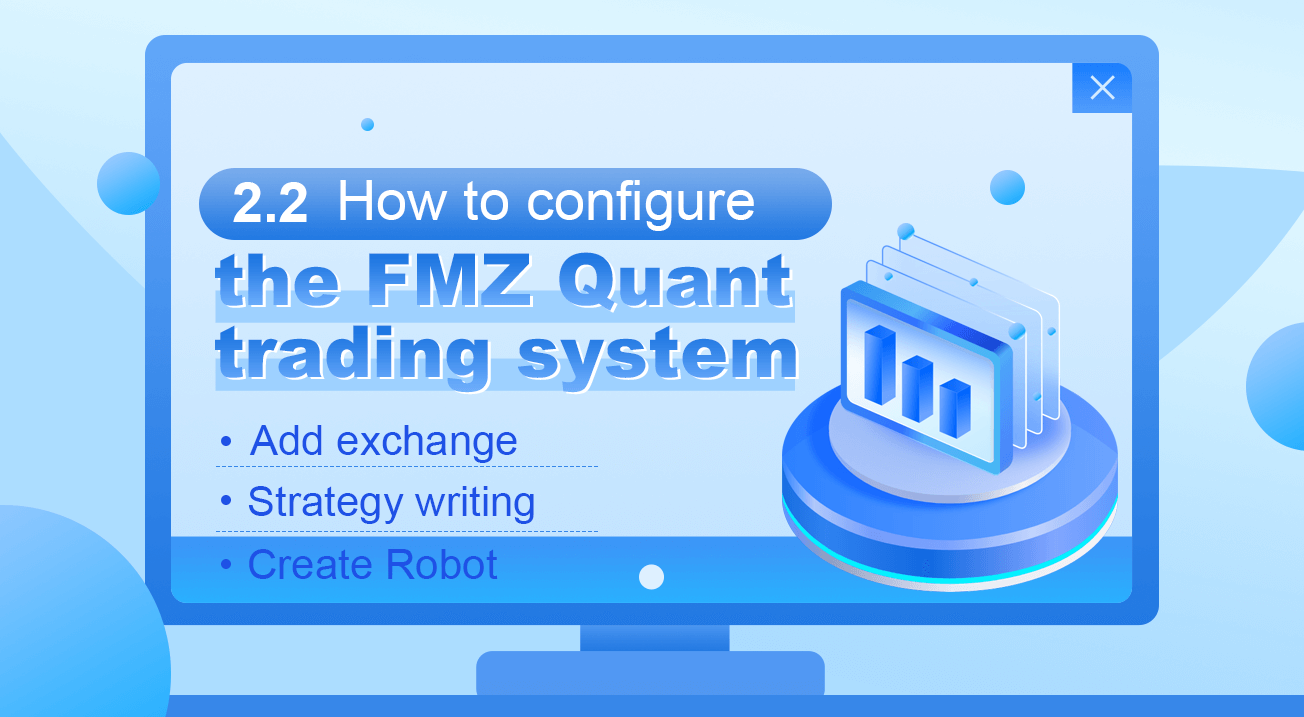
How to configure the FMZ Quant trading system
Summary
For the development of quantitative trading strategies, the first thing to do is the configuration of the trading tools. In this section we will take you through setting up exchanges, creating trading strategies, and creating robots, all of which are necessary prerequisites for quantitative trading.
The configuration learning part is divided into the simulation trading and the real market trading. We will mainly focus on cryptocurrency as trading target.
Add exchange
Adding an exchange is the first step in the entire configuration process. For the specific process, please see the screenshots below. It’s not a difficult step.
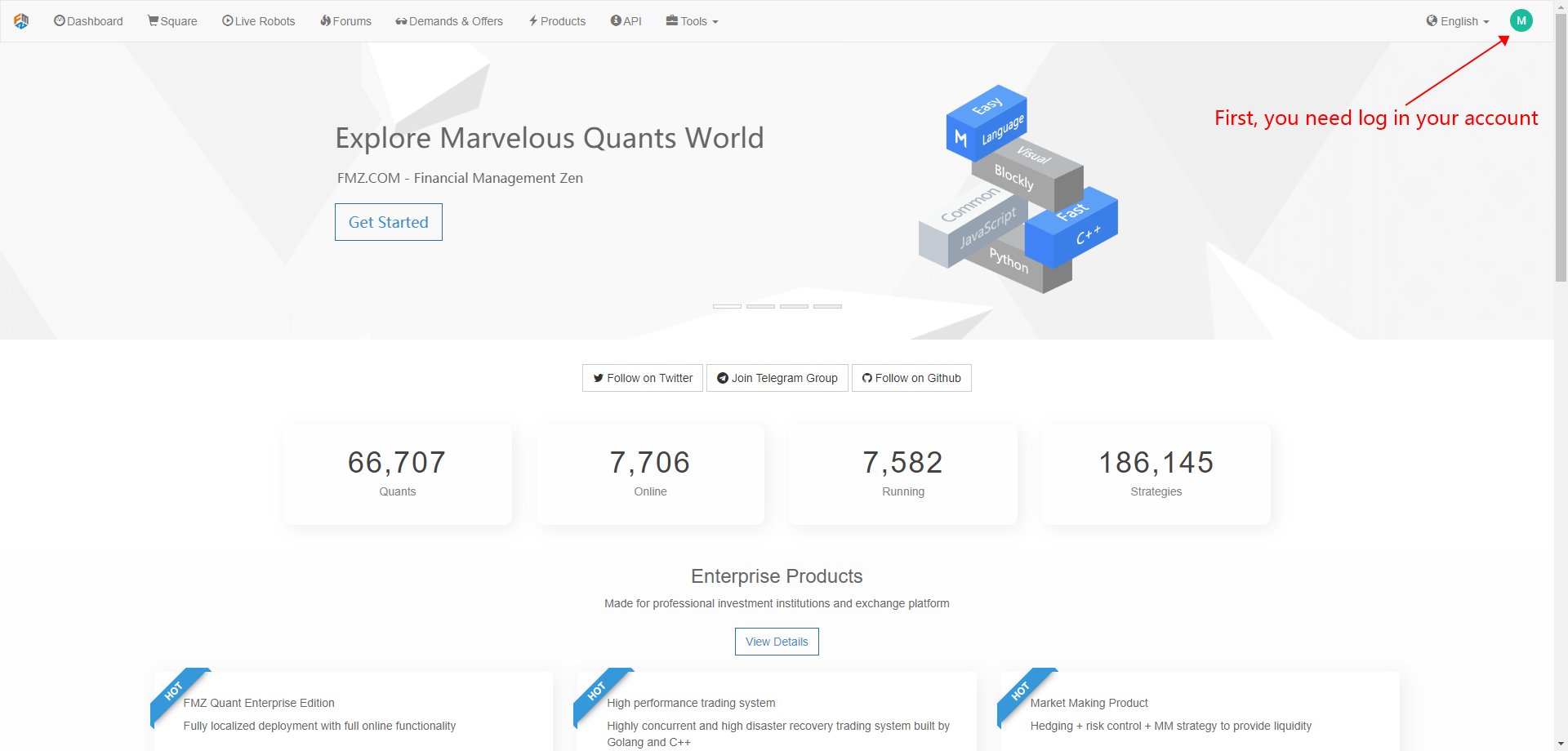

Strategy writing
Under the Dashboard page, click the strategy column. You will get the place where you stores all of your strategies. This page is mainly divided into two functions: strategy writing and simulation environment backtesting. The strategy writing area is the main working area of our future development of strategy (as shown below). If you already have a familiar coding editor, such as Emacs, Vim, Sublime Text or VS Code, you are feel free to continue to use them, after you done your coding, you can just copy and paste in this coding area. Many beginners are often confused by programming skills. Please don’t! allow me Emphasize this point again. Nowadays, Programming skills are tend to as easy as using a calculator. This page will also be used to debug the code during the development of the strategy. The debugging part will be explained in detail in the following chapters.
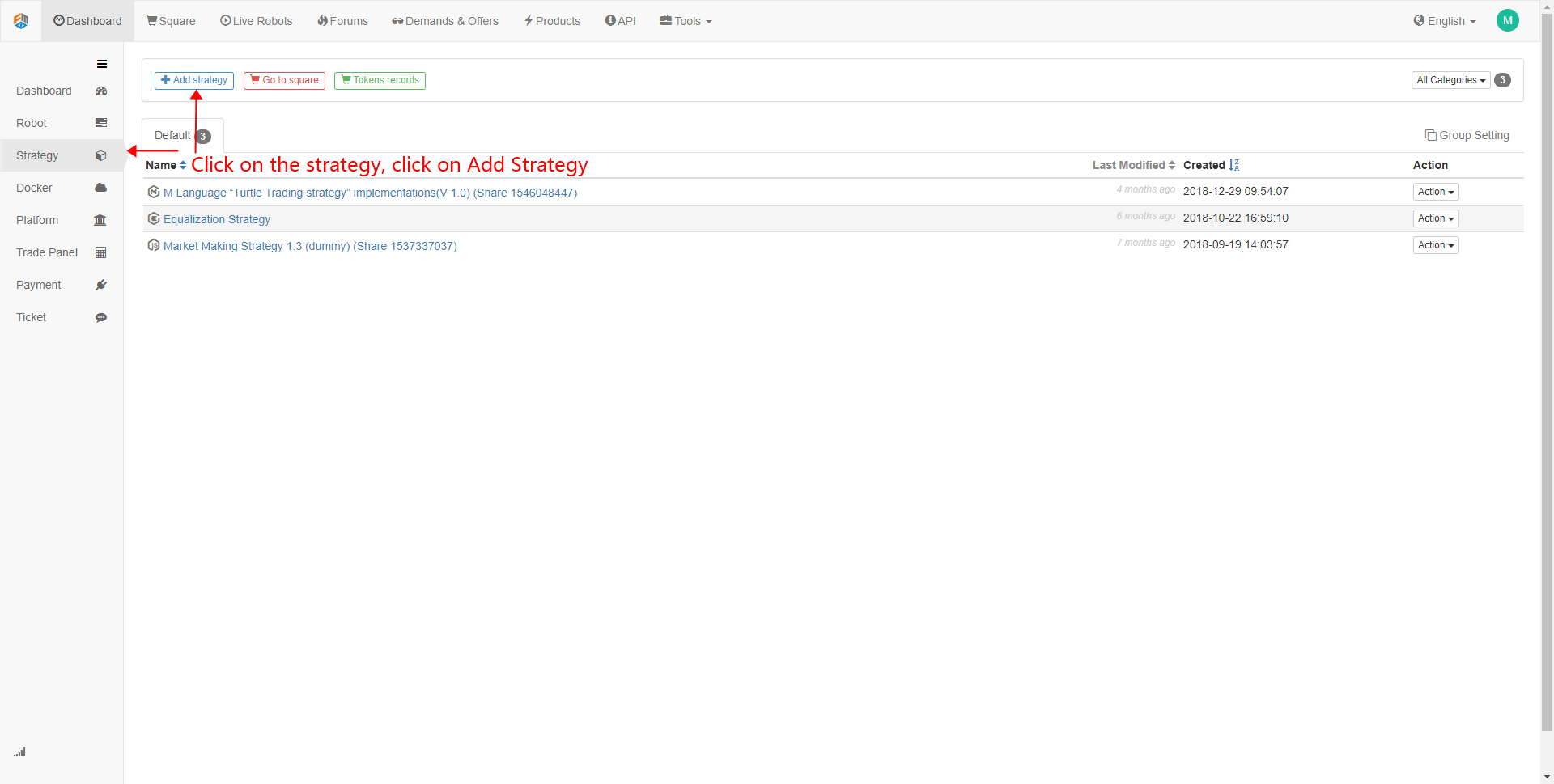
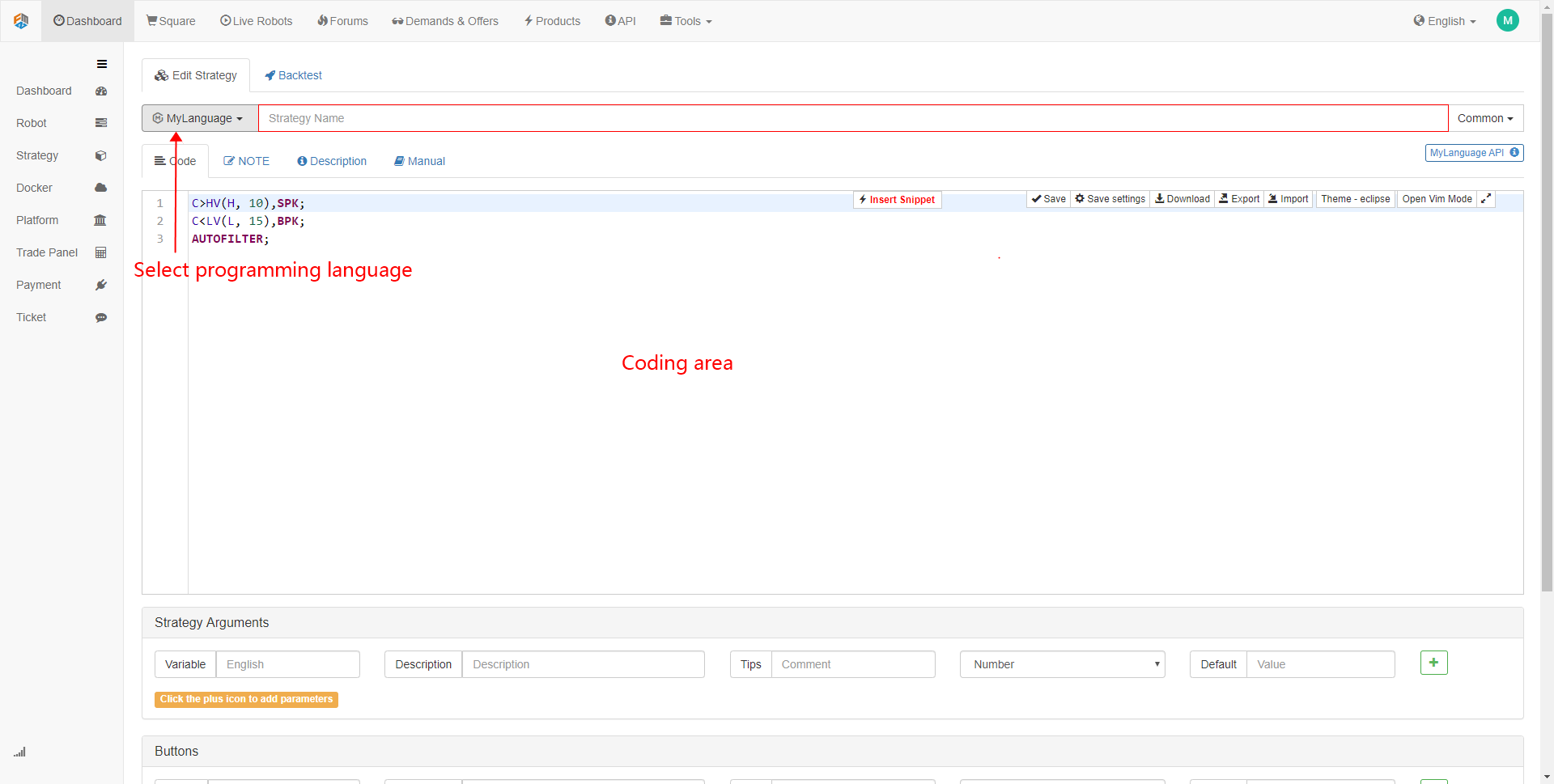
Create Robot
The Robot is the executor of the trading strategy. When the strategy is created, users will need create a robot, which can automatically execute each trading logic in the strategy code, as well as open, close positions and placing, withdraw orders. The specific steps to create a robot are as follows: On the Dashboard page, click on “Robot” and click on “Create Robot”. Next, Customize a name for the robot, then Click on the “+” sign to add the trading platform. at last, Click on “Create Robot”
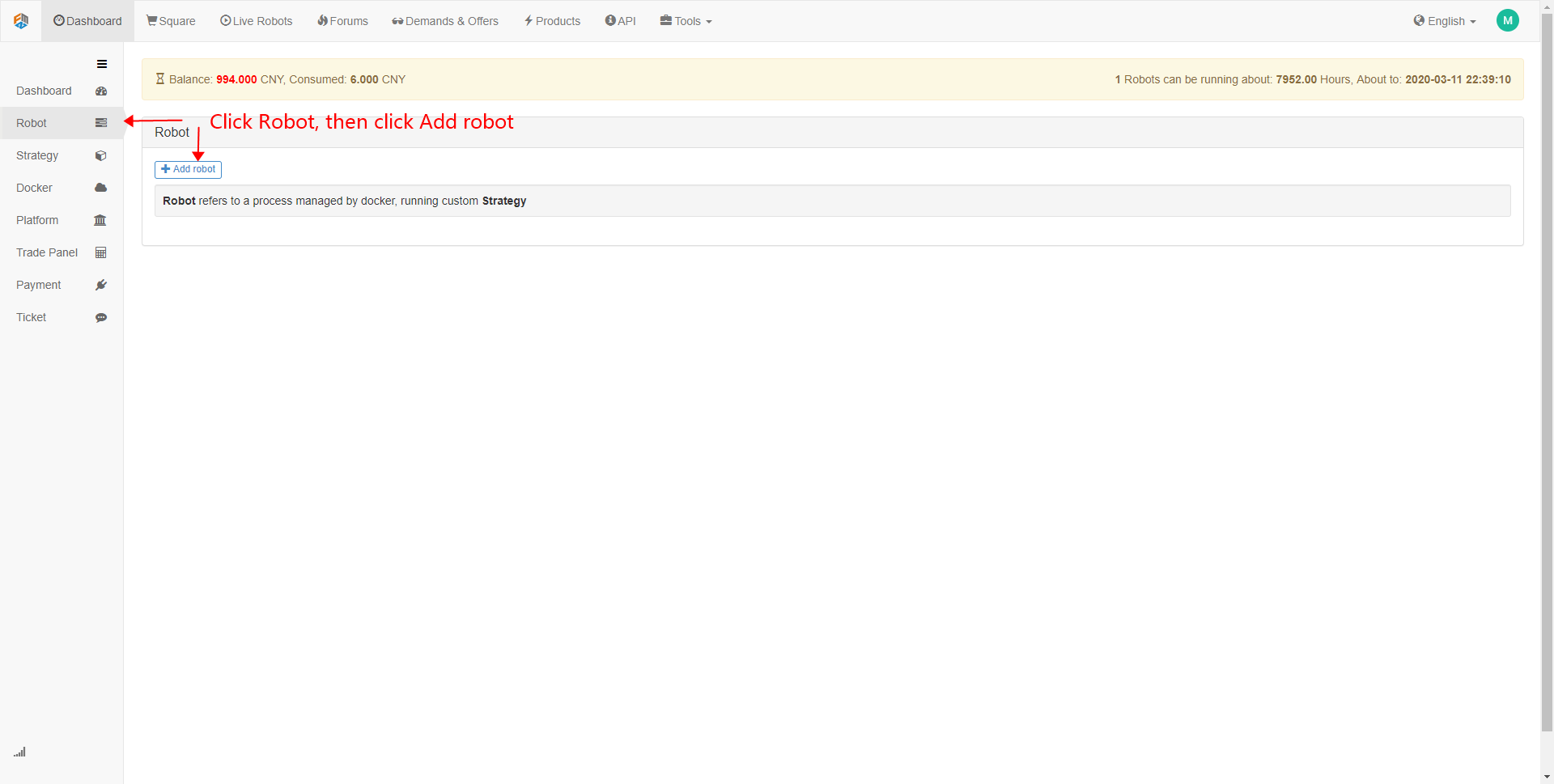

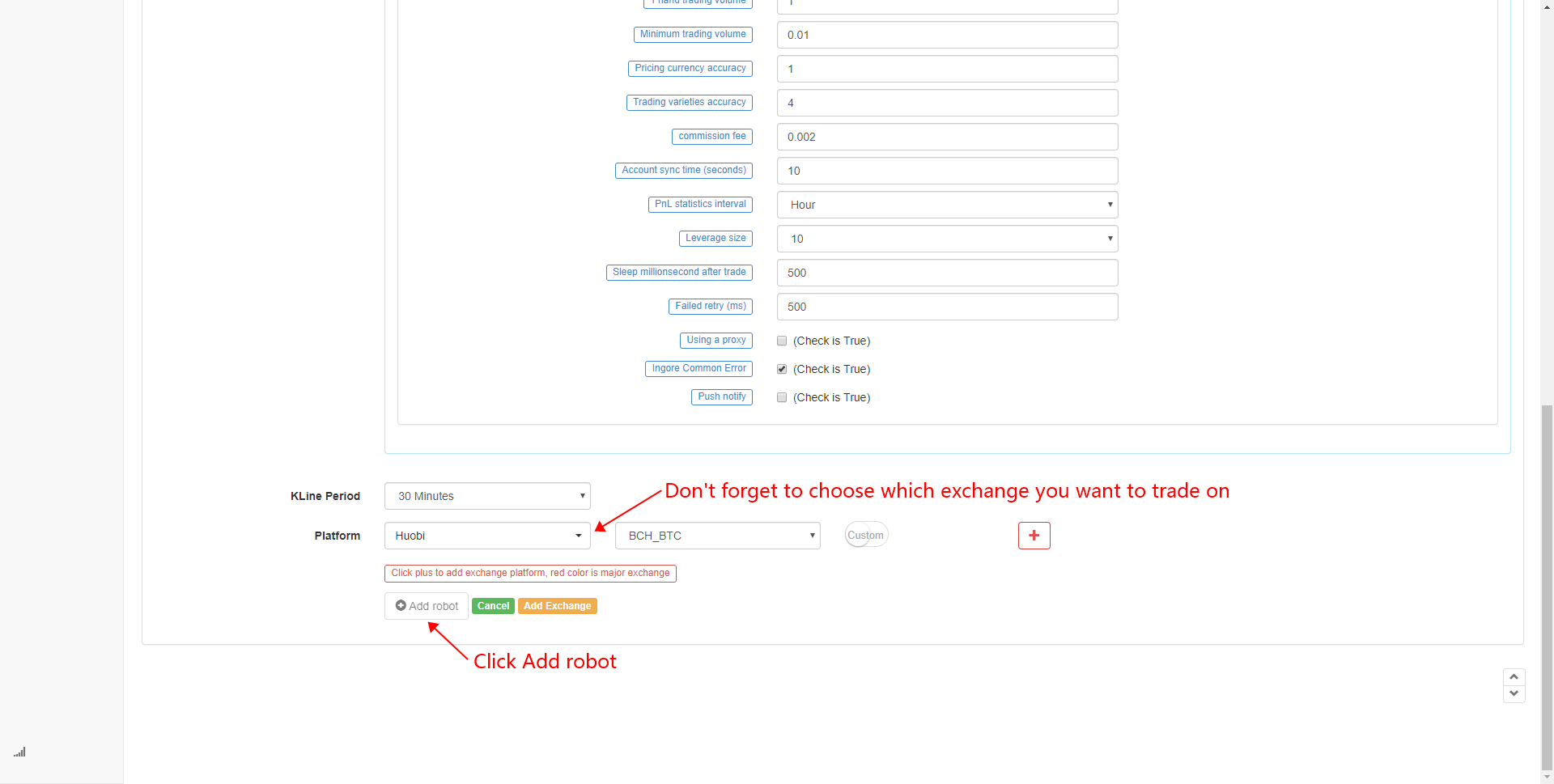
To sum up
In the above process, in addition to the difference between the first step of selecting the real market and the simulation market, the subsequent step strategy writing and creating the robot are unified steps. After the entire trading tool is configured, the trading robot starts to run, the trading operation will perform according to the specific instruction of the strategy.
Next section notice
Although you only need a simple three-step process to achieve basic configuration and easy to add exchanges and create the robot, it is difficult to achieve a executable strategy.
In the next section, we will take you through the APIs commonly used in quantitative trading to prepare for a executable trading strategy. Because no matter which kind of quantitative trading tool, it must be inseparable from the API interface, it is an important function to achieve quantitative trading.
After-school exercises 1. Try adding an exchange. 2. Try to code the trading strategy in this section.
- Quantitative Practice of DEX Exchanges (2) -- Hyperliquid User Guide
- DEX exchange quantitative practices ((2) -- Hyperliquid user guide
- Quantitative Practice of DEX Exchanges (1) -- dYdX v4 User Guide
- Introduction to Lead-Lag Arbitrage in Cryptocurrency (3)
- DEX exchange quantitative practice ((1) -- dYdX v4 user guide
- Introduction to the Lead-Lag suite in digital currency (3)
- Introduction to Lead-Lag Arbitrage in Cryptocurrency (2)
- Introduction to the Lead-Lag suite in the digital currency (2)
- Discussion on External Signal Reception of FMZ Platform: A Complete Solution for Receiving Signals with Built-in Http Service in Strategy
- Discussing FMZ platform external signal reception: a complete set of strategies for the reception of signals from built-in HTTP services
- Introduction to Lead-Lag Arbitrage in Cryptocurrency (1)
- 4.3 Getting started with the Python language
- 4.2 How to implement strategic trading in JavaScript language
- 4.1 JavaScript language quick start
- 3.5 Visual Programming language implementation of trading strategies
- 3.4 Visual programming quick start
- 3.3 How to implement strategies in M language
- 3.2 Getting started with the M language
- 3.1 Quantitative trading programming language evaluation
- 2.4 How to write a trading strategy on FMZ Quant platform
- 2.3 Common API explanations
- 2.1 Introduction to the quantitative trading tool
- 1.4 What are the elements of a complete strategy?
- 1.3 What are needed for quantitative trading?
- 1.2 Why choose quantitative trading
- 1.1 What is quantitative trading?
- FMZ Quant Quantitative Trading Quick Start
- The exchange's vulnerabilities are being analyzed
- Can we quantify a transaction without typing a code?
- Simplified version of Multi-platform Hedging Stabilization Arbitrage strategy (Study purpose only)
- Late sharing Bitcoin high-frequency robot that earned 5% daily in 2014